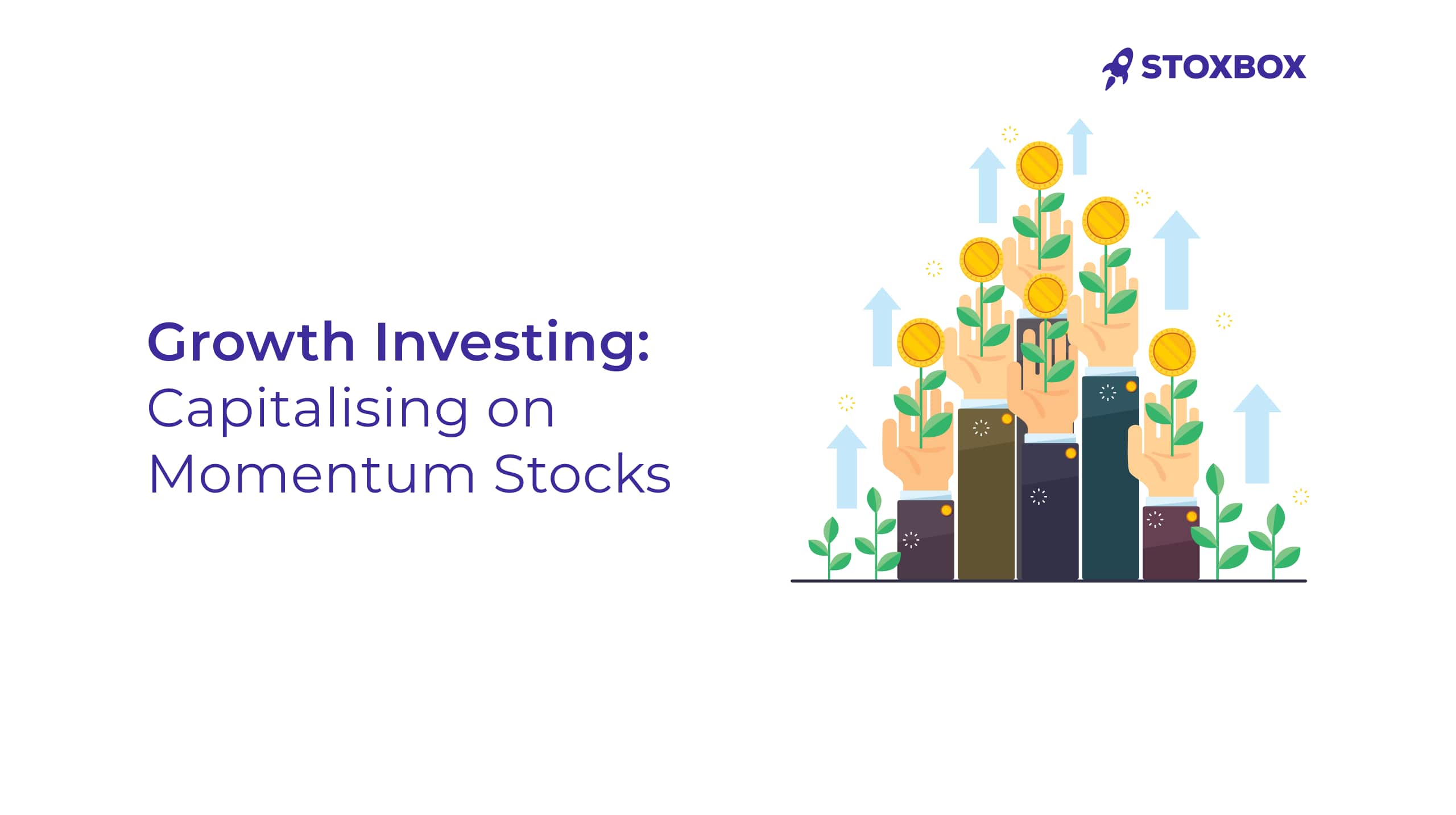Uderstand the basics of growth investing and its characterstics
Table of Contents
Some investors can tell when a company is going to grow significantly in the future. When they focus on these companies, they are growth investing. These companies often reinvest their earnings into expansion, R&D, and acquisitions rather than paying dividends.
What is in it for investors? When investors are growth investing, they’re basically looking at capital appreciation. They’re betting that the stock price will increase as the company grows.
Some key characteristics of growth investing:
- High Revenue Growth: When a company is expanding and has increased market share, they possibly have high revenues. A strong growth trajectory can signal future profitability for investors. Companies like these could be new entrants in a high-demand industry or established firms that have launched a successful new product line. Take, for instance, HDFC Bank Ltd. HDFC Bank has been consistent with high revenue growth because of its extensive reach and innovative banking solutions. Its main approach of expanding the customer base and new products has contributed much to its success.
- Reinvestment of Earnings: When a company is reinvesting their gains, they’re looking at long-term gains rather than temporary ones. By doing so, growth companies look at building a strong foundation so that they can expand in the future. It could mean scaling up production, entering new markets, or enhancing their technological capabilities. Let’s consider Reliance Industries Ltd. as an example. They heavily reinvest in growing their digital and telecom services through their subsidiary, Jio Platforms. It helps them to grow continuously and dominate the market in the telecom sector.
- Innovative Products or Services: Innovation is crucial for growth companies. They can maintain their position amidst the competitive market and cater to the needs of the consumer by innovating. They are well-equipped to take advantage of whatever opportunity comes their way and build on it. Let’s look at Tata Motors Ltd., for example. Their introduction of the Nexon EV, an electric vehicle, is a standout innovation in the Indian automotive market. This product has been successful and has driven substantial revenue growth. Today, Tata Motors stands as a leader in the EV segment.
How can you differentiate between value investing and growth investing?
| Basis | Value Investing | Growth Investing |
|---|---|---|
| Focus | The limelight is on undervalued stocks here. | Companies that have high growth potential are focused on. |
| Dividends | These companies pay dividends. | These companies reinvest their earnings. |
| Risk | It’s generally low because the investor looks at the margin of safety. | These are riskier because they depend on future growth. |
When investors are growth investing, it is also key that it is sustainable growth. What this means is that they are identifying and investing in companies that are capable of long-term growth as well as following environmental, social, and governance (ESG) principles.
This guarantees that these companies are responsible, not compromising on ethics or depleting natural resources. If you take the Indian market, sustainable growth investing is getting popular as investors are becoming more aware of the importance of ESG factors and their value.
Why should you invest in sustainable growth?
There are two things.
Companies that put sustainable growth first are more likely to stay profitable in the long term. It’s because they can handle regulatory changes better, not get affected during market shifts, and offer responsible products that the consumers want. Sustainable practices often lead to cost savings as they use and manage resources efficiently, being able to make more profits.
Investors in sustainable growth companies contribute to positive impact. These companies take active efforts to be eco-friendly. This means reducing carbon footprints, promoting fair labour practices, and supporting the development of communities. If investors also have the same values, they’re able to align them by investing in these companies while also taking care of their financial foals.
Let’s understand this in more detail by looking at some relevant sectors and examples in the Indian context.
Renewable Energy Sector
Consider India’s renewable energy sector for sustainable growth investing. There are companies in this sector that are developing and expanding solar, wind, and hydroelectric power. This is making it possible for more renewable energies to exist. It is helping reduce the dependence on fossil fuels and lower gas emissions from greenhouse gases. When an investor chooses to invest here, they’re essentially helping save the ecosystem.
Tata Power Solar, a subsidiary of Tata Power, is one of the leading solar power companies in the country. It provides solar energy solutions and has also significantly increased India’s solar capacity. Their initiatives encourage the usage of renewable energy and reduce carbon emissions, in turn supporting the government’s goals of sustainability.
Green Building and Construction
India’s construction industry is increasingly moving toward green building practices. Companies are using energy-efficient materials and waste reduction techniques to bring sustainable design into buildings. These green buildings minimise environmental impact, and the living conditions can be considered better as they are in line with ESG principles.
Godrej Properties is one of the leading companies in India for this. The company has gained several green building certifications, mainly focussing on energy efficiency and water saving. With these initiatives, Godrej Properties is able to carry out sustainable urban development.
Agriculture and Sustainable Farming
Sustainable farming is good for food security and environmental protection. This is why several farming businesses are going for techniques such as organic farming, precision agriculture, and water-efficient irrigation in the hope of being as productive as possible without hurting the environment.
Jain Irrigation Systems has been developing sustainable agriculture in India for years. This firm offers micro-irrigation systems, through which the use of water in farming is cut down majorly. This helps Jain Irrigation increase produce through sustainable means for long-term growth.
Finally, let’s cover the many kinds of growth investing.
Growth Stock Investing: Here, investors buy stocks of companies that will grow exponentially. Most of these stocks usually have a high P/E ratio because of their excellent earning expectations in the future. For example, investing in a tech company with an extremely high P/E ratio because they are supposed to keep on innovating and be at the top of the market.
Growth Equity Investing: Investors provide capital to established companies that are looking to grow faster. These companies may seek funds for expanding operations, entering new markets, or acquiring other businesses. For example, a private equity firm would fund a mid-sized tech company to grow their operations further and scale its expansion into international markets.
Dividend Growth Investing: This involves investing in companies whose dividend payouts increase with time. This strategy would provide them with stable, periodic income through dividend payouts with some opportunities for capital appreciation. Also, they can use those dividends for reinvestment, which results in further gains.
Growth and Income Investing: This is essentially a combination of growth and dividend investing, and it looks to combine capital appreciation with regular income through dividends. For instance, investing in a growing tech company that has a record of increasing their dividend payouts.
Now that we know the nuances of growth investing, we can use this with other strategies and build a solid portfolio. It’s important that we’re always informed and take decisions that are backed by research and analysis.
You might also Like.
Union Budget 2025-26 Impact on Sectors
Edit Announcement Impact Companies Enhancing the credit guarantee cover for...



